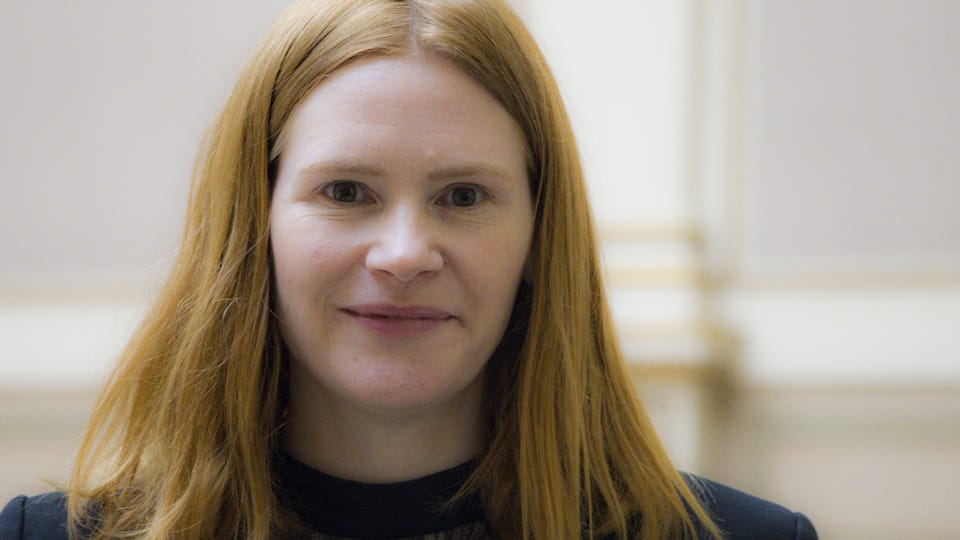
Photo: Vít Pohanka, Radio Prague International
“I am here to stay,” says Julia Tatiana Bailey, new director of Galerie Rudolfinum, one of the Prague’s leading art venues.
Rudolfinum is a place where history and culture intertwine like the intricate melodies of a Dvořák symphony. This grand building, with its neo-Renaissance flair, was constructed between 1876 and 1884, by Česká spořitelna – the Czech Savings Banks. It was built as an art museum and a concert hall. Designed by architects Josef Zítek and Josef Schulz, the Rudolfinum was named in honor of Crown Prince Rudolf of Austria and has been a beacon of culture and art in Prague for over a century.
Originally built to promote art and music, it was part of a grand plan to celebrate the Czech lands’ cultural revival. But when Czechoslovakia gained independence and a building was needed for its new parliament, Rudolfinum was selected. It served as a Chamber of Deputies or the lower house of the Czechoslovak parliament between 1918 and 1939. When Germany occupied Czechoslovakia they dissolved the parliament. So, the functional and artistic rehabilitation of the Rudolfinum was brought about–somewhat paradoxically–by the years of World War II. Ever since its end then it has been the home for the Czech Philharmonic and Galerie Rudolfinum.
See the rest here.

